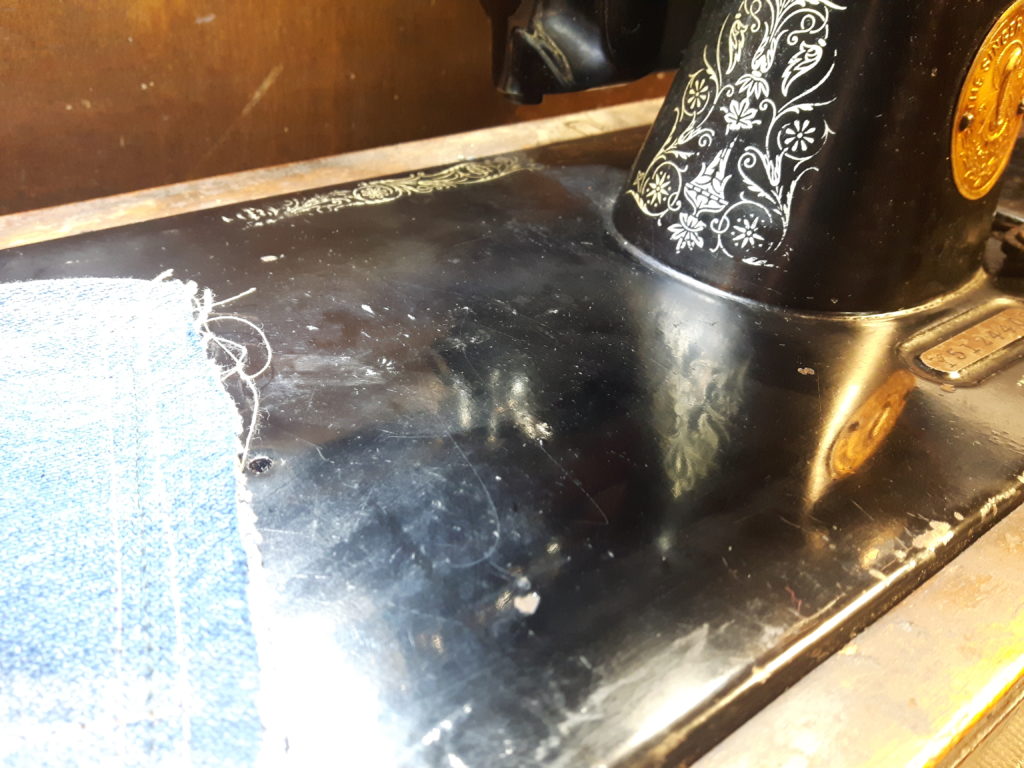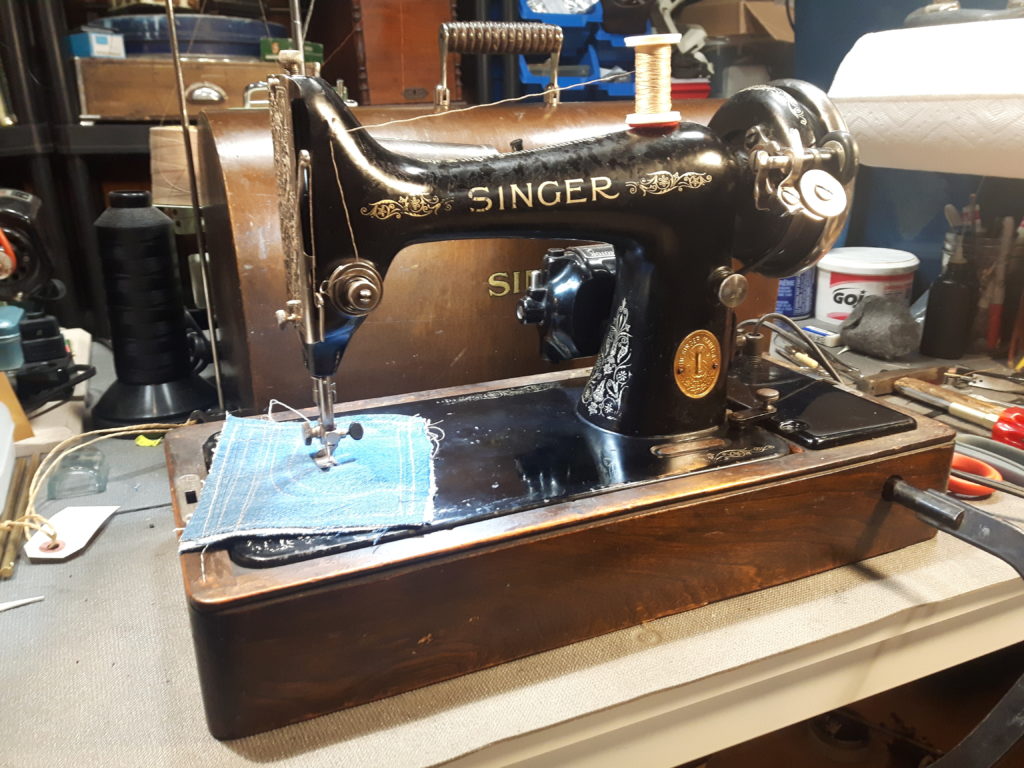
As collectors we are usually looking for the best examples of a given machine and in the case of the massively successful Singer 99, there are so many out there, that finding a near perfect example is not that hard to do.
People also comment on how these machines can be 100 years old or more and still work perfectly, but if a machine looks perfect then it stands to reason that just perhaps, it was not used very often, if at all.
We know this 1955 Pfaff 130 was never used because it’s original owner purchased it, and never used it because she hated sewing… I believe that as there was not a mark on the machine and the accessories were still wrapped in their original papers.

This Singer 99 was made on August 1st, 1927 and based on how smoothly the bed has been worn down to a glassy smoothness, I’d estimate it made at least 1000 quilts, because I have seen and own machines that have that kind of history.
The true testament to how well made these machines were is right here, thousands upon thousands of hours of good honest work, a million miles of thread, and thousands of yards of fabric have crossed this bed and polished it to a glossy sheen. The clearcoat is gone, the base paint is what is glowing…

And this nearly 95 year old machine still turns over as smoothly as buttered kitten on glass and makes an absolutely perfect stitch.


If this machine could talk…











